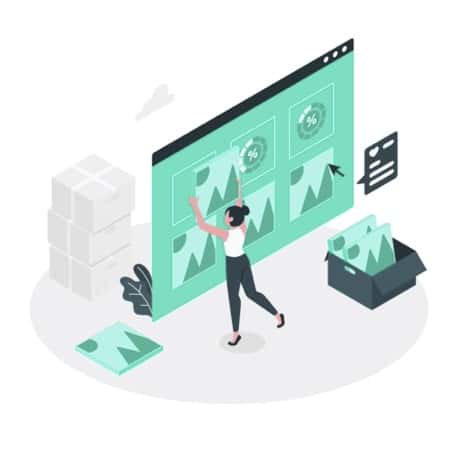In this post, we will explore seven tips for optimizing images to maximize their SEO potential.
From selecting the right format to including alt tags, these tips will empower you to optimize your website’s visuals and drive organic traffic.
Let’s get started.
1. Choose the Right Image Format
Selecting the appropriate file format for your images is essential for optimizing their size and quality.
The most common formats are PNG, JPEG, and GIF.
Choose the format that best suits your image’s purpose and maintains its quality while minimizing file size.
- JPEG is best for photographs and complex images with many colors
- PNG is well-suited for graphics, logos, and images with transparency, providing excellent quality while keeping file sizes reasonable.
- GIFs are suitable for simple animations and small images with limited colors.
Using the right image format for each specific use on your website helps you optimize visual appeal without compromising loading speeds.
2. Optimize Image Compression
Large image files can significantly impact website performance, leading to slower loading times and frustrated users. Effective image compression is key to overcoming this challenge.
There are various tools available, such as TinyPNG or ImageOptim, that can help you compress your images efficiently.
Aim for a balance between image quality and file size to ensure your website loads quickly while providing visually appealing content.
You can further optimize your images for the web by removing any unnecessary metadata from them.
By compressing your images effectively, you can ensure faster page loading times and an enhanced user experience.
3. Craft Descriptive Filenames and Alt Tags
Search engines use file names and alt text to understand the content of your images.
Descriptive filenames and alt tags are not only essential for SEO but also for accessibility. Alt tags provide alternative text that helps visually impaired users understand the content of your images and allows search engines to index them accurately.
Here are some tips for writing the best alt tags for your website images.
- Instead of relying on generic names like “IMG_001.jpg,” strive to create meaningful filenames incorporating relevant keywords.
- Craft concise alt tags that describe the image accurately while incorporating relevant keywords naturally.
- Incorporate relevant keywords in your file names and alt text but avoid keyword stuffing.
- Keep it natural and descriptive, so search engines and users can easily understand the context of your images.
The right balance between optimization and user experience will improve your SEO efforts while ensuring inclusivity.
4. Optimize Image Dimensions
With the increasing variety of devices and screen sizes, it’s essential to ensure your images look great on all platforms, including mobile devices.
Resizing images to match their intended display dimensions before uploading reduces browser burden and improves loading speed.
Uploading large images and then relying on HTML or CSS to resize them can result in slower loading times.
Analyze your website’s layout and determine the optimal image sizes for each section to create a seamless and visually appealing user experience.
5. Organize Image Files and Hosting
Proper organization of image files within your website’s directory structure contributes to improved search engine crawling and indexing.
Create descriptive folders that reflect your website’s structure and categorize related images accordingly.
Organizing your image files logically will enhance the accessibility and maintenance of your website.
You can also utilize a content delivery network (CDN) to host your images. CDNs (Content Delivery Networks) help distribute your images across multiple servers, which reduces delays and ensures faster delivery to users around the globe
6. Enhance Images with Captions and Context
Captions and contextual information surrounding your images can significantly enhance their visibility and engagement. Search engines also consider the surrounding text when indexing images.
Incorporating relevant captions and descriptive paragraphs around your images provides additional context and information to both users and search engines.
Ensure that keywords are naturally integrated into the surrounding text while maintaining a user-friendly tone.
Providing comprehensive context to your images will help you…
- Captivate your audience
- Boost SEO efforts
- Increase the chances of your images being discovered through search engine results
7. Leverage Structured Data Markup for Images
Structured data, also called schema markup, help search engines better understand your content and can enhance your image SEO.
Adding structured data to your images can result in rich snippets, such as image carousels or product information, which can drive more organic traffic to your website.
By correctly marking up your images with relevant properties, such as image object, name, description, and content URL, you enhance their visibility and accessibility.
This improved visibility can lead to higher click-through rates, more conversions, and improved SEO performance.
Leveraging structured data markup ensures search engines accurately interpret and display your images. As a result, you can further optimize your website’s presence in search results.
Conclusion
Image optimization is an indispensable aspect of SEO that warrants careful attention.
Implementing these tips can enhance your website’s performance, improve user experience, and boost your search engine rankings.
By incorporating the best practices into your digital marketing strategy, you can create a visually stunning, SEO-optimized website that captivates and engages your target audience.
Start optimizing your images today and witness the positive impact on your website’s performance.
